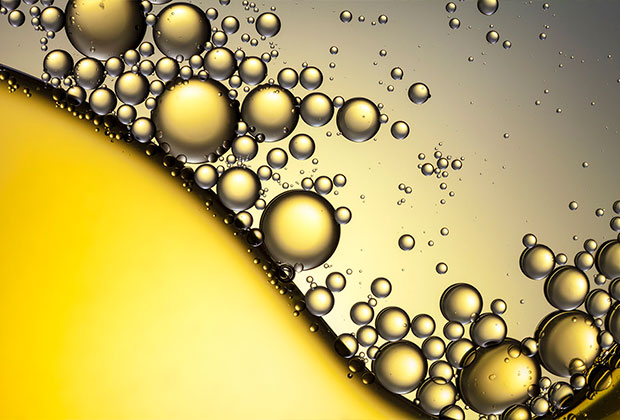Lipid oxidation is a major cause of deterioration in the quality of food and food products. Oxidation occurs through several chemical reactions that result in the creation of reactive oxygen precursors and free radicals. Oxidative changes lead to rancidity causing off flavors, loss of color, altered nutrient value, and may also produce toxic compounds which can be detrimental to the health of consumers.
In marine lipids, oxidation occurs because of a high concentration of polyunsaturated fatty acid, especially the unsaturated fatty acids EPA (eicosapentaenoic acid) and DHA (docosahexaenoic acid). These fatty acids are more susceptible to oxidation than monounsaturated fatty acids. As oxygen can also react with electron rich double bonds of unsaturated molecules, the rate of oxygen reaction increases as the degree of unsaturation increases. For this reason, autoxidation of EPA and DHA is much faster compared to LA (linoleic acid) and ALA(alpha-linolenic acid) (Miyashita, 2014).
The Peroxide Value (PV) is still the most common chemical method of measuring the oxidative deterioration of lipids, fats, and oils. In addition, PV is one of the most frequently used quality parameters during oil production, storage, and marketing. The Codex Alimentarius Commission provides a set of standards for fats and oils including acceptable peroxide values; 10 mEq active oxygen/kg edible oil. For cold pressed and virgin oils, the PV should be
15 mEq/kg.
Normally during the production of fish oil, the PV ranges from 6-22 mEq /kg (Mukhtiar, 2016). When the fish oil, without antioxidant addition, is exposed to air at ambient temperatures, it deteriorates rapidly and the PV increase 5 to 12-fold within two days (Umesha and Naidu, 2015). For edible vegetable oils, the PV varies according to the extraction method. Cold pressed oils have significantly lower PVs (1.98 mEq/kg) compared to hot-pressed oils (3.05 mEq/kg).
Benexia® Chia Oil is a cold-pressed oil, a “closed process” which ensures a PV <1.2 mEq/kg during manufacturing and in the final product. This is due to the lower temperature of the pressing process which reduces hydrolytic and oxidative processes and also retains the antioxidants naturally found in chia oil (carotenoids, tocopherols, sterols and phospholipids).
During storage, the PV of Benexia® Chia Oil (without antioxidant addition) remains stable for 24 months, stored in closed drums. Once the drums are opened and the oil has contact with air, the increase in PV in Benexia® Chia Oil is slow and remains under the Codex limit (10 mEq/kg) for 12 months at room temperature.


